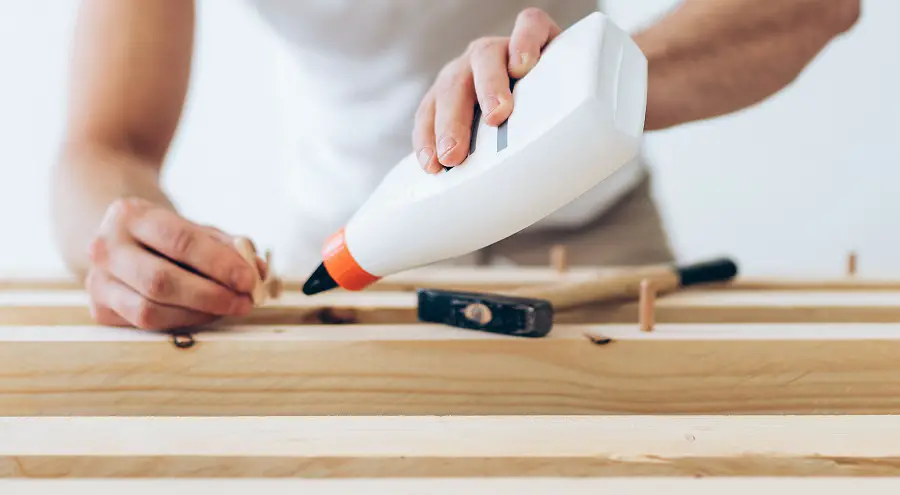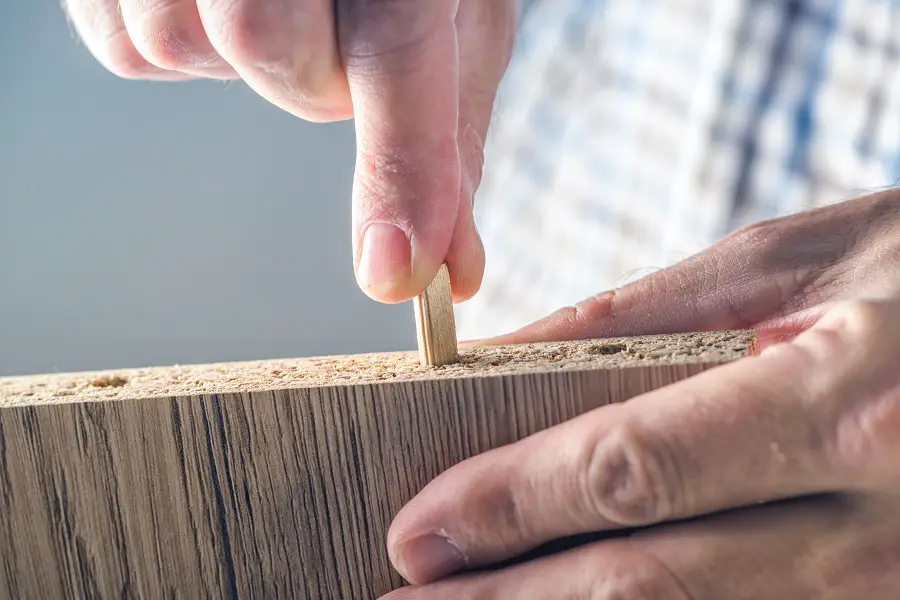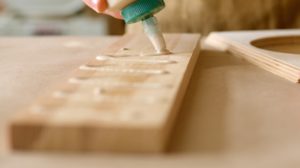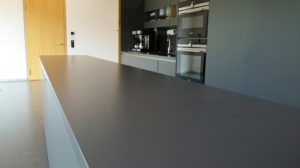Joining dowels - tipli, or 'tipli' as these small, serrated wooden cylinders are also known - is one of the most commonly used methods of joining furniture elements. Whether it's wooden, chipboard or MDF furniture, dowels help to form a solid bond between the elements, helping to stiffen the body. If wooden furniture is more popular swallowtail or cep and burrIn the case of chipboard or MDF furniture, dowel joints are more aesthetic and resistant. Regardless of the type of furniture, if we weigh the simplicity and aesthetics of the joint against its strength, dowel joints will be the winner. Provided that it is a non-removable one, i.e. adhesive is used to make it.

The pros and cons of dowel joints
Even if classic carpenters consider it a banal and not very sturdy joint, and modern carpenters turn to bolted joints or sophisticated systems, dowel joints have a number of advantages that cannot be ignored. Here are some of them:
- It's simple to do and doesn't require complicated apparatus. A drill, a suitable drill, dowels and wood glue is all you need.
- It can be used in DIY projects, even by beginners, to repair wooden household items.
- Very aesthetically pleasing joints can be achieved without much effort. In this case the joint should be visible and the dowels used should be of a contrasting color to the wood used for the rest of the furniture.
- It's a strong enough joint you can rely on. Increasing the number of dowels will increase the strength of the joint, provided they are placed correctly.
- It helps to strengthen and stiffen furniture frames alongside other fastening systems.
- It is very suitable for putting pieces together at a 90º angle or in extension.
Of course, there are downsides:
- It is weaker compared to the butt and mortise joint, which is widely used in wooden furniture.
- If certain requirements are not met - for example the diameter of the hole should be less than half the thickness of the furniture item - imperfect and less strong joints are created.
- If the wrong dowels are chosen or the wrong adhesive is used, the joint can fail over time.
- Variations in air humidity can lead to dimensional shrinkage of the dowels and backlash at the joints.
Whatever the pros and cons, dowel joints continue to be widely used in furniture manufacturing. Detailed information about this type of joint can be found at here.
What kind of adhesive to use and how the dowels need to be to make the joint as strong as possible
The adhesive used to fix dowels should be quick setting, have a short setting time, be consistent without excess filler and be suitable for the future use of the object. That is to say, if it is used for joining garden furniture or furniture used in areas of high humidity, the adhesive should be D3 or D4. Otherwise, the adhesive will fail over time and the first mechanical action will cause the joint to break. The most commonly used adhesive for such joints is aracite, i.e. PVA (polyvinyl acetate). If done correctly and the adhesive is chosen properly, the joint will be very strong, yielding under mechanical action in wood or chipboard.
The dowels must have ridges to make room for the adhesive and provide as large a contact surface as possible. They should be similar in diameter to the hole, so that there is no play, but also so that they can't go in. The hole should be slightly longer than the dowel so that the dowel will fit fully and the pieces will fit together perfectly. There must also be room inside for the adhesive film. The dowel is checked without glue after the hole is drilled to see if they fit. Then excess glue is applied and the dowel is forced into the hole by tapping it with a hammer, preferably wooden. This avoids damage to the parts. Any excess adhesive that comes out is wiped off with a wet cloth. It is very easy to clean off at this stage. After curing you will need to use a metal scraper to remove the film.

Special adhesive for dowel joints
For such joints, consumption seems small and unimportant, but it is not. The proof is that companies have dedicated products for such joints. One example is TISZABOND 2300 the firm's Szolvegy specially developed for dowel joints. It is a PVA adhesive with reactive groups and a high dry matter content that has a fast setting with reduced pressing time. The adhesive is specially formulated for dowel joinery of furniture that does not stand in high humidity environments, i.e. it is a D2 adhesive. The low moisture resistance requirements make the adhesive economical to use, and its mechanical strength remains very good. But if you want a joint with very good moisture resistance (outdoor conditions) you will have to turn to adhesives TISZABOND D4, mono or bi-component, depending on strength requirements.
If you're a DIY enthusiast, dowel jointing is a good choice for making or repairing different objects, both in terms of strength and aesthetics. To avoid making mistakes when drilling holes, you can use special putties that make dowel joints child's play. Good luck!


































Add comment